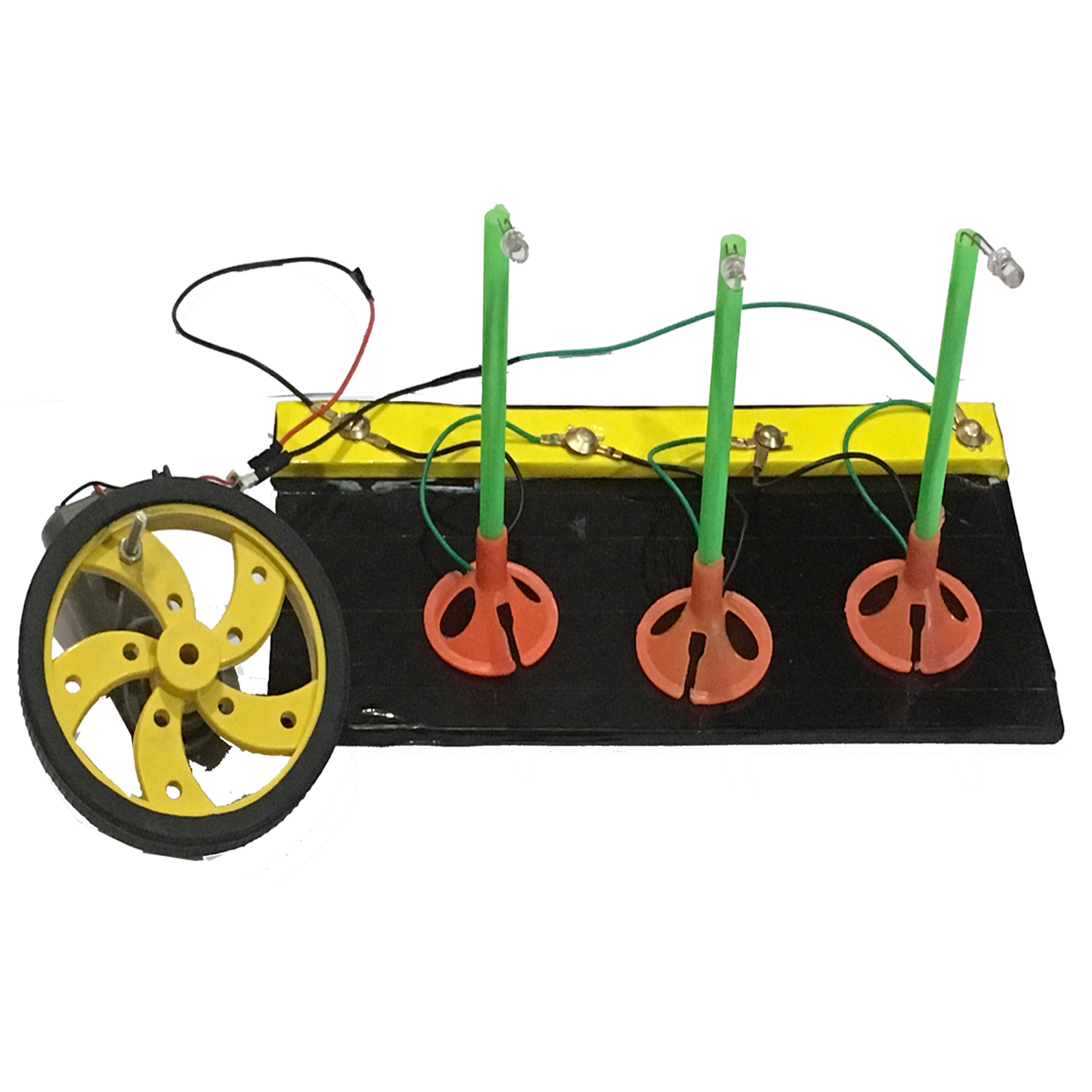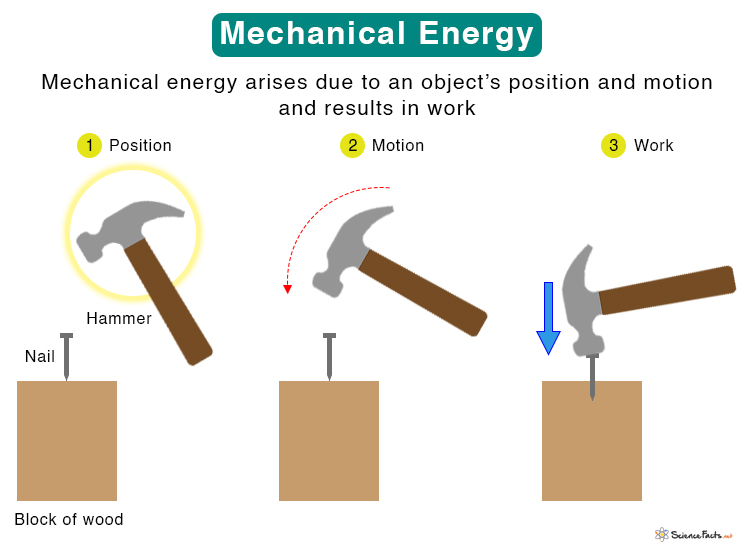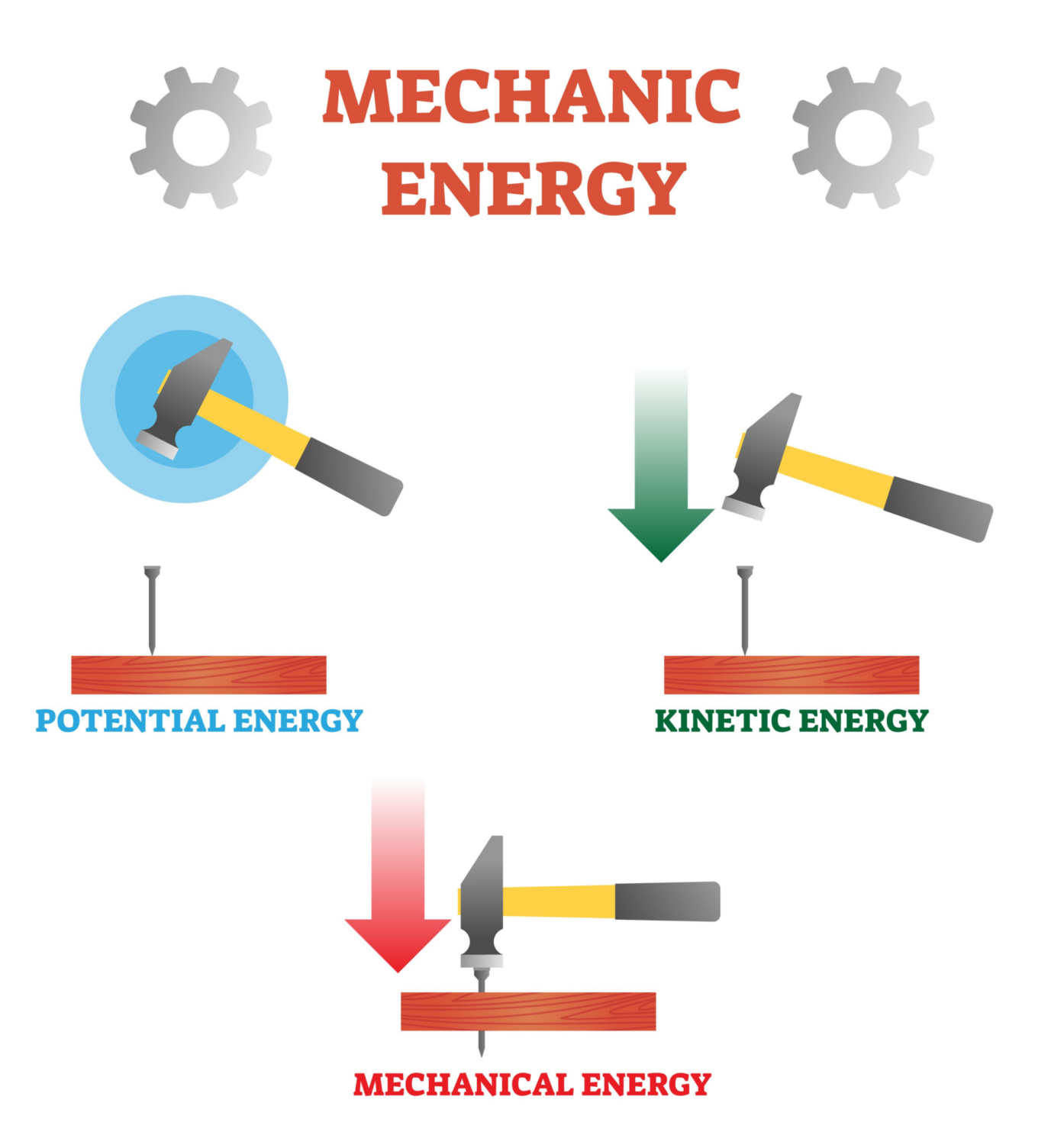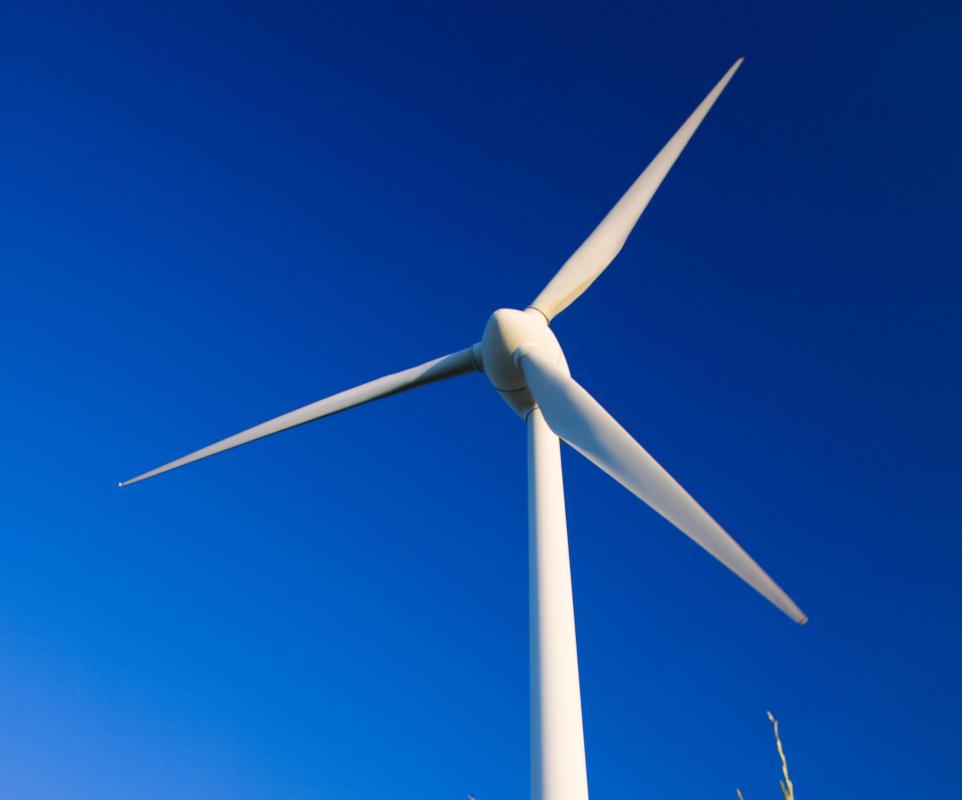.PNG)
Mechanical, Electrical, Chemical and Thermal Presentation Physics
Electrical energy is converted to mechanical work in the process. Figure 20.23 shows a schematic drawing of an electric motor. Figure 20.23 Torque on a current loop. A vertical loop of wire in a horizontal magnetic field is attached to a vertical shaft. When current is passed through the wire loop, torque is exerted on it, making it turn the shaft.

Convert Mechanical Energy Into Electrical Energy Project Hub
An electric generator is a device for converting mechanical energy into electrical energy. The process is based on the relationship between magnetism and electricity. When a wire or any other electrically conductive material moves across a magnetic field, an electric current occurs in the wire. The large generators used by the electric utility.

What Is Mechanical Energy? Examples, Definition, And Some FAQs Engineer Fix
1. Mechanical energy is an energy used for mechanical work.2. Let's try to understand what this means with help of an activity.3. Use 2 wires, motor, string.

Mechanical Energy Definition, Types, Examples, and Formula
This study examined the electromechanical characteristics of piezoelectric materials, which constitute a compact renewable energy source; these materials can convert mechanical energy (such as pressure or a cumulative impact) in the form of mechanical stress to electricity.

Mechanical to electrical energy conversion methods. A. Linear... Download Scientific Diagram
Electricity is a secondary energy source. Electricity is the flow of electrical power or charge. Electricity is both a basic part of nature and one of the most widely used forms of energy. The electricity that we use is a secondary energy source because it is produced by converting primary sources of energy such as coal, natural gas, nuclear.

Mechanical energy, concepts, and its examples. Science Tec By Dr AK Khanda
Mechanical energy conversion is the process by which kinetic energy, often in the form of motion, is converted into electrical energy, a vital source of power for our daily needs. Think of it as the magic that happens within power plants and industrial settings, where energy is transformed from one state to another to become usable electricity.

Law of Conservation of Energy Forms & Examples Embibe
Mechanical energy is constant in a system that has only gravitational forces or in an otherwise idealized system—that is, one lacking dissipative forces, such as friction and air resistance, or one in which such forces can be reasonably neglected.

Mechanical Energy Eschool
Abstract This chapter introduces mechanical and electrical energies. Mechanical energy can be broadly classified into potential energy and kinetic energy. Potential energy refers to the energy any object has due to its position in a force field. Kinetic energy is the work required to accelerate an object to a given speed.

What Device Converts Mechanical Energy into Electrical Energy
In physical sciences, mechanical energy is the sum of potential energy and kinetic energy. The principle of conservation of mechanical energy states that if an isolated system is subject only to conservative forces, then the mechanical energy is constant.

What Are the Main Types of Energy? Quick Electricity
Electrical energy is a form of energy that is generated by the movement of electrons through a conductor. It is a versatile and widely used form of energy that powers various devices and systems in our daily lives. One of the key applications of electrical energy is its conversion into mechanical energy.

What are the Different Mechanical Energy Examples?
This is a result of the law of conservation of energy, which says that, in a closed system, total energy is conserved—that is, it is constant. Using subscripts 1 and 2 to represent initial and final energy, this law is expressed as. KE1 + PE1 = KE2 + PE2. K E 1 + P E 1 = K E 2 + P E 2.

A Device That Converts Mechanical Energy Into Electrical Energy
An electric motor is a device used to convert electricity into mechanical energy—opposite to an electric generator.They operate using principles of electromagnetism, which shows that a force is applied when an electric current is present in a magnetic field.This force creates a torque on a loop of wire present in the magnetic field, which causes the motor to spin and perform useful work.

Produce Free Energy using 4 mechanical to electrical energy YouTube
Mechanical energy (kinetic energy or potential energy) is the energy of either an object in motion or the energy that is stored in objects by their position. Mechanical energy is also a driver of renewable energy. Many forms of renewable energy rely on mechanical energy to adequately produce power or convert energy.

Converting Mechanical Energy to Electrical Energy YouTube
Mechanical energy is the energy that is possessed by an object due to its motion or due to its position. Mechanical energy can be either kinetic energy (energy of motion) or potential energy (stored energy of position).

Forms Of Mechanical Energy / Types of energy vector illustration scheme VectorMine
Mechanical energy is energy stored in objects by tension. Compressed springs and stretched rubber bands are examples of stored mechanical energy.. Typically, the energy in sound is smaller than in other forms of energy. Electrical energy is delivered by tiny, charged particles called electrons, that typically move through a wire. Lightning.

Law of Conservation of Energy Forms & Examples Embibe
electric generator, any machine that converts mechanical energy to electricity for transmission and distribution over power lines to domestic, commercial, and industrial customers. Generators also produce the electrical power required for automobiles, aircraft, ships, and trains. The mechanical power for an electric generator is usually obtained from a rotating shaft and is equal to the shaft.